Abstract
The Cisco Catalyst Switch Module 3012 is a Gigabit Ethernet Switch Module in a standard switch-bay form-factor for use in all BladeCenter chassis. This non-stacking switch is a full wire-rated, non-blocking switch for use with high performance servers.
Introduction
The Cisco Catalyst Switch Module 3012 is a Gigabit Ethernet Switch Module in a standard switch-bay form-factor for use in all BladeCenter chassis. This non-stacking switch is a full wire-rated, non-blocking switch for use with high performance servers.
This switch provides a next generation networking solution for blade server environments. Built upon Cisco's market-leading hardware and IOS software, the switch is designed to deliver scalable, high performance, highly resilient connectivity while supporting ongoing IT initiatives around reducing server infrastructure complexity and TCO by seamlessly integrating into existing Cisco management networks.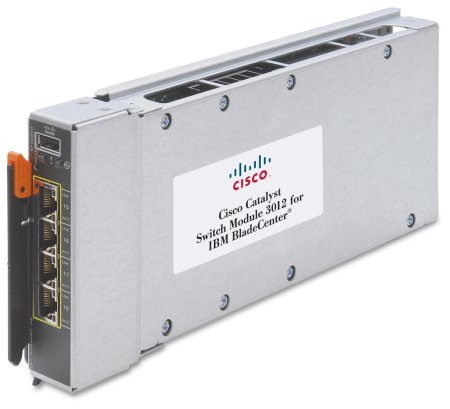
Figure 1. Cisco Catalyst Switch Module 3012
Did you know?
Built on Cisco hardware and Cisco IOS software, the Cisco Catalyst Switch Module 3012 is engineered with unique technologies specifically designed for blade server–based application infrastructure. It is also fully compatible with BladeCenter Open Fabric Manager, enabling I/O virtualization and making switch installation and replacement a simple process.
Part number information
Table 1 shows the part numbers to order this module.
Table 1. Part numbers and feature codes for ordering
| Description | Part number | Feature code |
| Cisco Catalyst Switch Module 3012 | 43W4395 | 5450 |
The switch module part number includes the following items:
- Cisco Catalyst Switch Module 3012
- USB-to-DB9 console cable
- Getting started guide
- Safety Information
The switch uses standard Category 5, 5e, or 6 cabling with RJ-45 connectors. These cables are not supplied with the switch.
Features
The supported features and specifications for the Cisco Catalyst 3012 switch module are:
Ports:
- Four external RJ-45 1000BASE-T connectors for making 10/100/1000 Mbps connections to a backbone, end stations, and servers.
- 14 internal full-duplex Gigabit ports, one connected to each of the blade servers in the BladeCenter unit.
- USB-style serial port. This is the Cisco console port, and offers a totally out-of-band management path if desired. A USB-to-DB9 cable is used to connect the switch module to PC. This cable is shipped with the switch.
- One internal full-duplex 100 Mbps port connected to the management module.
Performance features:
- Autosensing of speed on the 10/100/1000 ports and auto-negotiation of duplex mode on the ports for optimizing bandwidth.
- Gigabit EtherChannel for enhanced fault tolerance and for providing up to 4 Gbps of bandwidth between switches, routers, and servers.
- Support for standard frames with sizes from 64 to 1530 bytes and jumbo frames with a maximum size of 9216.
- Forwarding of Layer 2 frames and Layer 3 packets at 1 Gbps line rate.
- Per-port broadcast-storm control for preventing a faulty end station from degrading overall system performance with broadcast storms.
- Port Aggregation Protocol (PAgP) and Link Aggregation Control Protocol (LACP) for automatic creation of EtherChannel links.
- Internet Group Management Protocol (IGMP) snooping support to limit flooding of IP multicast traffic.
- Multicast Virtual Local Area Network (VLAN) registration (MVR) to continuously send multicast streams in a multicast VLAN, while isolating the streams from subscriber VLANs for bandwidth and security.
- IGMP filtering for controlling the set of multicast groups to which hosts on a switch port can belong.
- Dynamic address learning for enhanced security.
- Support for multiple EtherChannel load balance algorithms (SMAC or DMAC, SIP or DIP, XOR-SMAC/DMAC or XOR-SIP/DIP) to offer maximum performance on aggregated links.
Manageability features:
- Address Resolution Protocol (ARP) for identifying a switch through its IP address and its corresponding MAC address.
- Cisco Discovery Protocol (CDP) Versions 1 and 2 to aid in troubleshooting and reporting on misconfiguration of ports connecting to other devices supporting CDP.
- Link Layer Discovery Protocol (LLDP) and LLDP Media Endpoint Discovery (LLDP-MED) for interoperability with third-party IP phones.
- Network Time Protocol (NTP) for providing a consistent time stamp to all switches from an external source.
- Directed unicast requests to a Trivial File Transfer Protocol (TFTP) server for obtaining software upgrades from a TFTP server.
- Default configuration storage in flash memory to ensure that the switch can be connected to a network and can forward traffic with minimal user intervention.
- In-band monitoring of the switch through the built-in Cisco Device Manager Web-based tool.
- In-band management access through up to 16 simultaneous Telnet connections for multiple command line interface (CLI)-based sessions over the network.
- In-band management access through up to five simultaneous, encrypted Secure Shell (SSH) connections for multiple CLI-based sessions over the network. This option is available only in the cryptographic software image.
- In-band management access through SNMP versions 1, 2c, and 3 get and set requests.
- Out-of-band management (CLI) with the switch module’s console port.
- Supported by CiscoWorks management software.
- Protected Mode feature to isolate switch management from the Advanced Management Module, for increased security of the switch.
- Cisco Network Services (CNS) embedded agents for automating switch management, configuration store, and delivery.
- Cisco Network Assistance (CNA), a free GUI-based application tool to configure most features of this switch. For more information and to download CNA, go to http://www.cisco.com/go/cna
- Extensive debugging options to aid in troubleshooting and diagnosing issues.
- Support for multiple management interfaces.
Availability and redundancy features:
- Hot Standby Routing Protocol (HSRP) for Layer 3 router redundancy.
- Link state tracking to mirror the state of the external ports on the internal Ethernet links and to allow the failover of the processor blade traffic to an operational external link on a separate Cisco Ethernet switch.
- Configurable Unidirectional link detection (UDLD) for detecting and disabling unidirectional links. This feature prevents a larger network failure in the event that a unidirectional link is detected, thus reducing downtime in these situations.
- IEEE 802.1D Spanning Tree Protocol (STP) for redundant backbone connections and loop-free networks.
- IEEE 802.1s Multiple STP (MSTP) for grouping VLANs into a spanning tree instance, and provided for multiple forwarding paths for data traffic and load balancing.
- IEEE 802.1w Rapid STP (RSTP) for rapid convergence of the spanning tree by immediately transitioning root and designated ports to the converting state.
- Optional spanning tree features available in the PVST+, rapid PVST+, and MSTP modes.
- Flex Link Layer 2 interfaces to back up one another as an alternative to STP for basic link redundancy.
VLAN support:
- Support for 1005 total VLANs. These VLANs can be any VLAN ID from 1–4094, except 1001–1005, which are reserved by Cisco.
- Cisco Inter-Switch Link (ISL) and IEEE 802.1Q trunking protocol on all ports for network moves, adds, and changes; management and control of broadcast and multicast traffic; and network security by establishing VLAN groups for high-security users and network resources.
- VLAN Query Protocol (VQP) for dynamic VLAN membership.
- VLAN Trunking Protocol (VTP) pruning for reducing network traffic by restricting flooded traffic to links destined for stations receiving the traffic.
- Dynamic Trunking Protocol (DTP) for negotiating trunking on a link between two devices and for negotiating the type of trunking encapsulation (802.1Q) to be used.
- Voice VLAN for creating subnets for voice traffic from Cisco IP phones.
- VLAN 1 minimization to reduce the risk of spanning tree loops or storms by enabling VLAN 1 to be disabled on any individual VLAN trunk link. With this feature enabled, no user traffic is sent or received. The switch CPU continues to send and receive control protocol frames.
- Private VLANs to address VLAN scalability issues.
- VLAN Flex Link Load Balancing to provide Layer 2 link redundancy without STP.
- Support for up to 128 instances of spanning tree per switch or per switch stack.
Security features:
- Bridge protocol data unit (BPDU) guard for shutting down a Port Fast-configured port when an invalid configuration occurs.
- Protected port option for restricting the forwarding of traffic to designated ports on the same switch.
- Password-protected access (read-only and write-only access) to management interfaces (the device manager and CLI) for protection against unauthorized configuration changes.
- Port security option for limiting and identifying MAC addresses of the station allowed to access the port.
- Port security aging to set the aging time for secure addresses on a port.
- Multilevel security for a choice of security level, notification, and resulting actions.
- MAC-based port-level security for restricting the use of a switch port to a specific group of source addresses and preventing switch access from unauthorized stations.
- MAC-based access control lists (ACLs).
- Standard and extended IP access control lists (ACLs) for defining security policies on Layer 3 (router ACLs) and Layer 2 (port ACLs) interfaces.
- Terminal Access Controller Access Control System Plus (TACACS+), a proprietary feature for managing network security through a TACACS server.
- RADIUS for verifying the identity of, granting access to, and tracking activities of remote users.
- IEEE 802.1X port-based authentication to prevent unauthorized devices from gaining access to the network.
- IEEE 802.1X port-based authentication with VLAN assignment for restricting 802.1X-authenticated users to a specified VLAN.
- IEEE 802.1X port-based authentication with port security for authenticating the port and managing network access for all MAC addresses, including that of the client.
- IEEE 802.1X port-based authentication with voice VLAN to allow an IP phone access to the voice VLAN irrespective of the authorized or unauthorized state of the port.
- IEEE 802.1X port-based authentication with guest VLAN to provide limited services to non-802.1X-compliant users.
- IEEE 802.1X accounting to track network usage.
Quality of Service (QoS) and Class of Service (CoS) features:
- Automatic QoS (auto-QoS) to simplify the deployment of existing QoS features by classifying traffic and configuring egress queues.
- Cross-stack QoS for configuring QoS features to all switches in a switch stack rather than on an individual-switch basis.
- Classification
- IP Type of Service/Differentiated Services Code Point (IP ToS/DSCP) and IEEE 802.1p CoS marking priorities on a per-port basis for protecting the performance of mission-critical applications.
- IP ToS/DSCP and IEEE 802.1p CoS marking for flow-based packet classification (classification based on information in the MAC, IP, and TCP/UDP headers) for high-performance QoS at the network edge, allowing for differentiated service levels for different types of network traffic and prioritizing mission-critical traffic in the network.
- Trusted port states (CoS, DSCP, and IP precedence) within a QoS domain and with a port bordering another QoS domain.
- Trusted boundary for detecting the presence of a Cisco IP Phone, trusting the CoS value received, and ensuring port security.
- Policing
- Traffic-shaping policies on the switch port for managing how much of the port bandwidth should be allocated to a specific traffic flow.
- Out-of-profile markdown for packets that exceed bandwidth utilization limits.
- Ingress queuing and scheduling
- Two configurable ingress queues for user traffic (one queue can be the priority queue).
- Weighted tail drop (WTD) as the congestion-avoidance mechanism for managing the queue lengths and providing drop precedences for different traffic classifications.
- Shaped round robin (SRR) as the scheduling service for specifying the rate at which packets are sent to the stack or internal ring (sharing is the only supported mode on ingress queues).
- Egress queues and scheduling
- Four egress queues per port.
- WTD as the congestion-avoidance mechanism for managing the queue lengths and providing drop precedences for different traffic classifications.
- SRR as the scheduling service for specifying the rate at which packets are dequeued to the egress interface (shaping or sharing is supported on egress queues).
- Automatic quality of service (QoS) voice over IP (VoIP) enhancement for port-based trust of DSCP and priority queuing for egress traffic.
- Egress policing and scheduling of egress queues - four egress queues on all switch ports; support for strict priority and weighted round-robin (WRR) CoS policies.
Layer 3 features:
- HSRP for Layer 3 router redundancy.
- IP routing protocols for load balancing and for constructing scalable, routed backbones RIP Versions 1 and 2.
Note: Unlike the Cisco Catalyst 3110 family of switches, the Cisco Catalyst 3012 module does not support OSPF, BGP, and EIGRP routing protocols, policy-based routing, VPNs, and multicast routing,
- IP routing between VLANs (inter-VLAN routing) for full Layer 3 routing between two or more VLANs, allowing each VLAN to maintain its own autonomous data-link domain.
- Static IP routing for manually building a routing table of network path information.
- Equal-cost routing for load-balancing and redundancy.
- Internet Control Message Protocol (ICMP) and ICMP Router Discovery Protocol (IRDP) for using router advertisement and router solicitation messages to discover the addresses of routers on directly-attached subnets.
- DHCP relay for forwarding UDP broadcasts, including IP address requests, from DHCP clients.
- IPv6 support
- IPv6 host support (IPv6 unicast addressing, IPv6 traffic processing, IPv6 applications support including DNS, ping, traceroute, telnet, ftp, tftp, http, and ssh). IPv6 traffic forwarding is not supported. IPv6 host support is incorporated into the IP Base software feature set that comes standard with this switch module.
- IPv4 and IPv6 coexistence. The switch module supports dual IPv4 and IPv6 protocol stacks to provide seamless step-by-step migration to an IPv6 environment.
Note: Unlike the Cisco Catalyst 3110 family of switches, the Cisco Catalyst 3012 module only supports IPv6 host functions, and does not support IPv6 routing (IPv6 traffic forwarding, IPv6 static routes, and OSPF, RIP, or EIGRP for IPv6), and IPv6 ACLs. - IP unicast reverse path forwarding (unicast RPF) for confirming source packet IP addresses.
Monitoring features:
- Switch LEDs that provide visual port, switch, and stack-level status.
- SPAN/RSPAN support for local and remote monitoring of the network.
- Four groups (history, statistics, alarms, and events) of embedded remote monitoring (RMON) agents for network monitoring and traffic analysis.
- MAC address notification for tracking the MAC addresses that the switch has learned or removed.
- Syslog facility for logging system messages about authentication or authorization errors, resource issues, and time out events.
- Layer 2 trace route to identify the physical path that a packet takes from a source device to a destination device.
- Time Domain Reflector (TDR) to diagnose and resolve cabling problems on 10/100 and 10/100/1000 copper Ethernet ports.
- Online diagnostics to test the hardware functionality of the supervisor engine, modules, and switch while the switch is connected to a live network.
- On-board failure logging (OBFL) to collect information about the switch and the power supplies connected to it.
- Enhanced object tracking (EOT) for HSRP to determine the proportion of hosts in a LAN by tracking the routing table state or to trigger the standby router failover.
Supported IEEE standards:
- IEEE 802.1d Spanning Tree Protocol (STP)
- IEEE 802.1s Multiple STP (MSTP)
- IEEE 802.1w Rapid STP (RSTP)
- IEEE 802.1p Tagged Packets
- IEEE 802.1Q Tagged VLAN (frame tagging on all ports when VLANs are enabled)
- IEEE 802.1x port-based authentication
- IEEE 802.2 Logical Link Control
- IEEE 802.3 10BASE-T Ethernet
- IEEE 802.3u 100BASE-TX Fast Ethernet
- IEEE 802.3ab 1000BASE-T Gigabit Ethernet
- IEEE 802.3z 1000BASE-X Gigabit Ethernet
- IEEE 802.3ad Link Aggregation Control Protocol
- IEEE 802.3x Full-duplex Flow Control on all ports
Supported BladeCenter chassis and expansion cards
The Cisco Catalyst Switch Module 3012 is supported in the BladeCenter chassis as listed in Table 2.
Table 2. BladeCenter chassis that support the Cisco Catalyst Switch Module 3012
| I/O module | Part number | |||||||
| Cisco Catalyst Switch Module 3012 | 43W4395 | Y | Y† | Y | Y | Y | Y | N |
† The Advanced Management Module must be installed in the BladeCenter E chassis
The Cisco Catalyst Switch Module 3012 supports the expansion cards listed in Table 3. Table 3 also lists the chassis bays in which the switch module must be installed when used with each expansion card.
The BladeCenter chassis have the following bays:
- BladeCenter S, E, and T have four standard I/O bays (1, 2, 3, and 4).
- BladeCenter H has four standard I/O bays (1, 2, 3, and 4), two bridge bays (5 and 6), and four high-speed bays (7, 8, 9, and 10).
- BladeCenter HT has four standard I/O bays (1, 2, 3, and 4) and four high-speed bays (7, 8, 9, and 10).
The 3012 fits in a standard I/O bay (bays 1-6) and, with the addition of the Multi-Switch Interconnect Module (MSIM) in the BladeCenter H, can also fit in a high-speed I/O bay (bays 7-10). The 3012 is not supported with MSIM-HT in high-speed bays of the BladeCenter HT chassis.
Table 3. Cisco Catalyst Switch Module 3012 and BladeCenter chassis I/O bays support
| Gigabit Ethernet integrated on the server planar | None | Y | Y | N | N | N | N | N | N | N | N |
| Ethernet Expansion Card (CFFv) | 39Y9310 | Y† | Y† | Y | Y | N | N | N | N | N | N |
| Ethernet Expansion Card (CIOv) | 44W4475 | N | N | Y | Y | N | N | N | N | N | N |
| QLogic Ethernet and 4 Gb FC Card (CFFh) | 39Y9306 | N | N | N | N | N | N | Y | N | Y | N |
| 2/4 Port Ethernet Expansion Card (CFFh) | 44W4479 | N | Y* | N | N | N | N | Y | Y | Y | Y |
| QLogic Ethernet and 8 Gb FC Card (CFFh) | 44X1940 | N | N | N | N | N | N | Y | N | Y | N |
† Supported only if the expansion card is installed in slot 1 of BladeCenter Storage and I/O Expansion Unit (39R7563).
* The 2/4 Port Ethernet Expansion Card supports I/O bay 2 connections only when installed into a blade server that is installed into BladeCenter S chassis.
Popular configurations
This section shows how the Cisco Catalyst Switch Module 3012 can be used in configurations.
Basic two-port configuration
Figure 2 shows basic use of the Cisco Catalyst Switch Module 3012 to route the two-port Ethernet controller that is integrated onto the blade server. Two Ethernet Switch Modules are installed in bay 1 and bay 2 of the BladeCenter chassis. The connections between the controller and the switch modules are internal to the chassis. No cabling is needed.
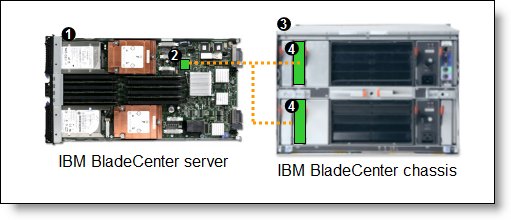
Figure 2. Using Cisco Catalyst Switch Module 3012 to route the integrated Ethernet ports
Table 4 lists the components that are used in the two-port configuration shown in Figure 2.
Table 4. Components used in the two-ports-per-server configuration
| Diagram reference | Part number / machine type | Description | Quantity |
| Varies | BladeCenter HS22 or other server | 1 to 14 | |
| None | Ethernet controller on the system board of the server | 1 per server | |
| Varies | Any BladeCenter server (see Table 2) | 1 | |
| 43W4395 | Cisco Catalyst Switch Module 3012 | 2 |
Four-port configuration
Figure 3 shows the use of four Cisco Catalyst Switch Module 3012 units to route four Ethernet ports from each server: the two integrated ports plus two ports supplied by a compatible CFFv or CIOv expansion card. Four Ethernet Switch Modules are installed in bay 1, bay 2, bay 3, and bay 4 of the BladeCenter chassis. All connections between the controller and card and the switch modules are internal to the chassis. No cabling is needed.
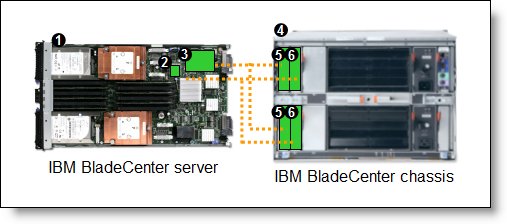
Figure 3. Using the Cisco Catalyst Switch Module 3012 to route the four Ethernet ports from the integrated controller and a CFFv or CIOv expansion card
Table 5 lists the components that are used in the four-port configuration shown in Figure 3.
Table 5. Components used in the four-ports-per-server configuration
| Diagram reference | Part number / machine type | Description | Quantity |
| Varies | BladeCenter HS22 or other supported server | 1 to 14 | |
| None | Ethernet controller on the system board of the server | 1 per server | |
| Varies | Compatible CFFv or CIOv expansion card (see Table 3) | 1 per server | |
| Varies | Any BladeCenter chassis (see Table 2)* | 1 | |
| 43W4395 | Cisco Catalyst Switch Module 3012 routing signals from the CFFv or CIOv card |
2 | |
| 43W4395 | Cisco Catalyst Switch Module 3012 routing signals from the integrated controller |
2 |
*Note: The expansion card can be installed in servers in the BladeCenter S (8886). However, by doing so, you lose the ability to connect to the BladeCenter S Disk Storage Modules (DSMs). The Ethernet expansion card goes in the place of the SAS expansion card that is needed to connect to the DSMs. This might be appropriate for clients that want to use external iSCSI storage or need more than four Ethernet ports per blade. If you are simply looking for redundant Ethernet switches or four Ethernet ports per blade, consider using the 2/4 Port Ethernet Expansion Card (CFFh), part number 44W4479.
Maximum configuration: Eight Ethernet ports per server
Since BladeCenter servers support a CFFh expansion card plus either a CFFv or CIOv card (depending on the model of the server), you can install up to eight Cisco Catalyst Switch Module 3012 devices in a BladeCenter H chassis or BladeCenter HT. Figure 4 shows this eight-port solution. All connections between the cards and the switch modules are internal to the chassis. No cabling is needed.
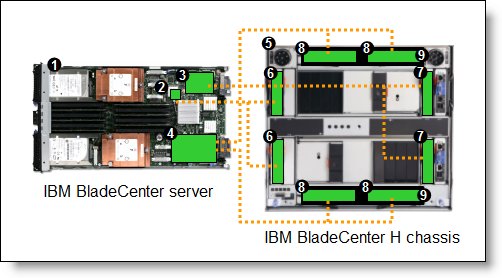
Figure 4. Using the Cisco Catalyst Switch Module 3012 to route eight Ethernet ports per server
Table 6 lists the components that are used in the eight-Ethernet-ports-per-server configuration shown in Figure 4.
Table 6. Components used in the eight-Ethernet-ports-per-server configuration
| Diagram reference | Part number / machine type | Description | Quantity |
| Varies | BladeCenter HS22 or other supported server | 1 to 14 | |
| None | Ethernet controller on the system board of the server | 1 per server | |
| Varies | Compatible CFFv or CIOv expansion card (see Table 3) | 1 per server | |
| 44W4479 | 2/4 Port Ethernet Expansion Card (CFFh) | 1 per server | |
| 8852 | BladeCenter H chassis | 1 | |
| 43W4395 | Cisco Catalyst Switch Module 3012 routing signals from the integrated controller |
2 | |
| 43W4395 | Cisco Catalyst Switch Module 3012 routing signals from the CFFv or CIOv card |
2 | |
| 43W4395 | Cisco Catalyst Switch Module 3012 routing signals from the CFFh card |
4 | |
| 39Y9314 | Multi-switch Interconnect Module | 2 |
Connectors and LEDs
Figure 5 shows the front panel of the Cisco Catalyst Switch Module 3012.
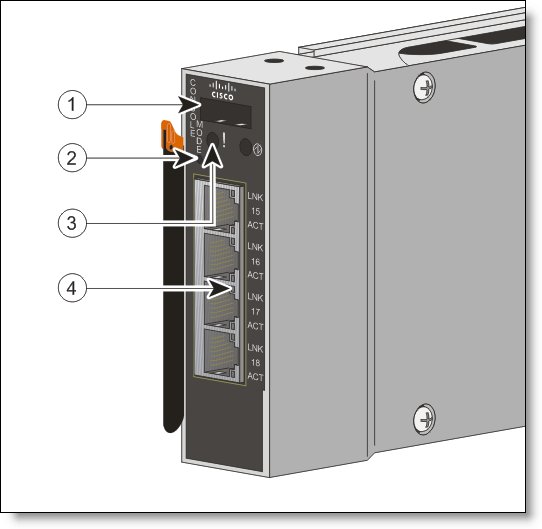
Figure 5. Front panel of the Cisco Catalyst Switch Module 3012
The components visible on the front of the switch module are identified in Table 7.
Table 7. Components on the front panel
| Callout | Description |
| 1 | USB console port |
| 2 | Mode button |
| 3 | Switch LEDs - Fault LED (left) and system power LED (right) |
| 4 | 10/100/1000 Ethernet ports |
Network cabling requirements
The network cables required for the switch module are as follows:
- 10BASE-T:
- UTP Category 3, 4, 5 (100 meters (328 feet) maximum)
- 100-ohm STP (100 meters maximum)
- 100BASE-TX:
- UTP Category 5 (100 meters maximum)
- EIA/TIA-568 100-ohm STP (100 meters maximum)
- 1000BASE-T:
- UTP Category 6
- UTP Category 5e (100 meters maximum)
- UTP Category 5 (100 meters maximum)
- EIA/TIA-568B 100-ohm STP (100 meters maximum)
Operating environment
The environment must meet the following temperature and altitude requirements:
- Temperature: 10° to 35°C (50° to 95°F)
- Relative humidity: 8% to 80% non-condensing
Related product families
Product families related to this document are the following:
Trademarks
Lenovo and the Lenovo logo are trademarks or registered trademarks of Lenovo in the United States, other countries, or both. A current list of Lenovo trademarks is available on the Web at https://www.lenovo.com/us/en/legal/copytrade/.
The following terms are trademarks of Lenovo in the United States, other countries, or both:
Lenovo®
BladeCenter®
The following terms are trademarks of other companies:
IBM® and ibm.com® are trademarks of IBM in the United States, other countries, or both.
Other company, product, or service names may be trademarks or service marks of others.
